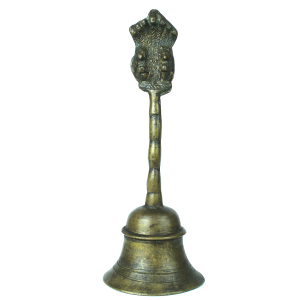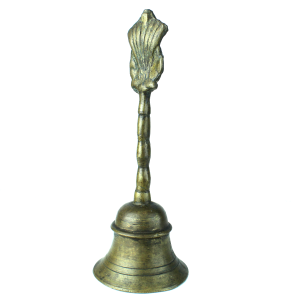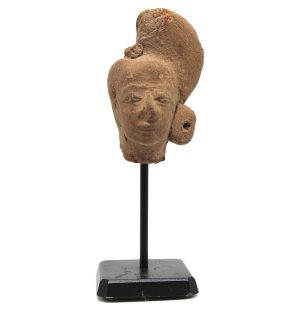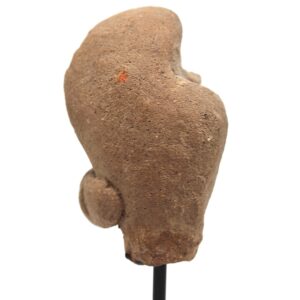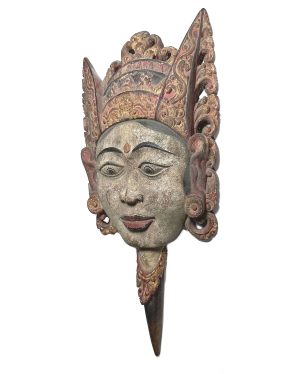-


$295.00
H: 10” Dia: 3.75” | FREE SHIPPING within Continental U.S.!
This Hindu prayer bell was likely placed on a home or temple altar and used in daily puja rituals. It has a smooth and undecorated body with only incised parallel rings circling plain surfaces and is topped by a Garuda pair sheltered by Naga hoods. Garuda, Vishnu’s mythical winged bird mount, and Naga, a seven-headed hooded serpent, are natural enemies but when they are represented together, they symbolizes peace, a very appropriate adornment for the tranquility and serenity elicited by the pleasing sounds of a prayer bell.
-


$195.00
Ht: 4” W: 1.5” D: 1.75”|FREE SHIPPING WITHIN CONTINENTAL U.S.!
Crafted during the Majapahit Empire in Java this head was part of a bas-relief frieze. Most unearthed figures are small decapitated heads with Javanese facial features, hairstyles and large ear ornamentations characteristic of the upper classes. A great small piece of history.
-
Sale!


$395.00 Original price was: $395.00.$325.00Current price is: $325.00.
Ht: 5.125″ W: 3.75″ D: 0.625″ | FREE SHIPPING within continental U.S.
This vintage massive, heavy silver pendant represents a four armed Ganesh seated within a betel shape frame wearing a crown and reaching for modak, a rice flour sweet dumpling filled with coconut that is his favorite treat. Ganesh pendants are worn for good luck as he is the God who removes the obstacles in devotees’ lives. The coin silver chain is included.
-
Sale!


$295.00 Original price was: $295.00.$245.00Current price is: $245.00.
Ht: 2.75”. W: 2.5” D: 0.25” 1.3oz. | FREE SHIPPING WITHIN THE CONTINENTAL U.S.!
This rare pendant of Ganesh and his mother Parvati seated on a throne is framed within a betel shape with scalloped edges. It is finely crafted heavy silver piece with a top round suspension loop that mirrors the ovule on the bottom. Used as a protective amulet, it shows signs of wear that give it a smooth fine patina.
-


$265.00
H: 14.5″ W: 6.625″ D: 2.375″ | FREE SHIPPING
This very fine and very beautiful vintage woodcarving of Dewi Sri , Devi Sri or Sridevi in Java, the Balinese Hindu goddess of rice and prosperity, is in excellent condition considering it is a much used vintage piece. Personally collected in Bali in the 1970s, it reflects the offerings made to Dewi Sri placed in the rice fields to protect the rice harvest. She is depicted here as a young, attractive and fertile woman wearing a striking, highly detailed and decorative headdress similar to those worn in Balinese dances leaving her upper forehead bare and framing her oval face with high curved eyebrows, wide-open eyes and beautiful pursed lips. With its flat back it can be mounted on a wall.
-


$165.00
This painted earthenware terracotta Hindu devotional image (murti ) of Shiva and Parvati was used to help devotees in daily prayers (puja) focus and visualize the deities on their home altar. This image is both aniconic (symbolic, abstract, and non- representational) and figurative. Shiva’s image is represented by a symbolic round phallus – a lingham…
End of content
End of content

